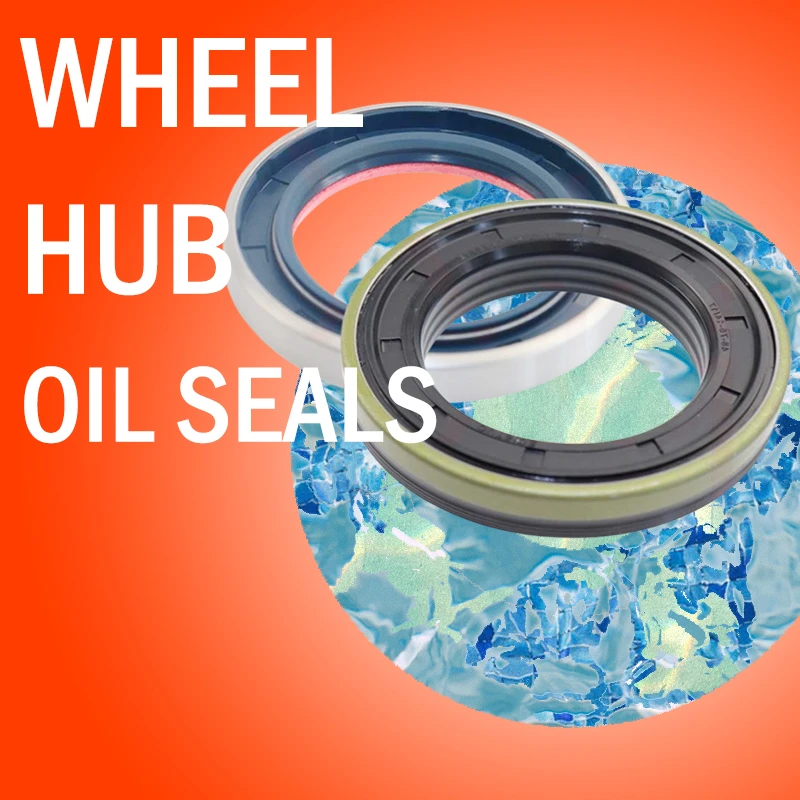Nov . 25, 2024 10:24 Back to list
wheel hub oil seal
Understanding Wheel Hub Oil Seals Importance and Maintenance
Wheel hub oil seals, often overlooked yet crucial components of a vehicle's drivetrain, play a pivotal role in ensuring the longevity and efficiency of the wheel hub assembly. These seals are designed to prevent the leakage of lubricant from the wheel bearings and to keep contaminants such as dirt and water out. An effectively functioning oil seal is vital for maintaining the proper operation of the wheel assembly, ultimately improving vehicle safety and performance.
The Function of Wheel Hub Oil Seals
At its core, the primary responsibility of a wheel hub oil seal is to create a barrier between the lubricated area of the wheel bearings and the outside environment. The wheel bearings require adequate lubrication to reduce friction and wear during operation. If gear oil or grease leaks out of the bearings, it can lead to severe issues such as overheating, increased wear, and even total bearing failure. On the other hand, if dirt, moisture, or other contaminants infiltrate the bearings, the risk of pitting and corrosion increases, leading to reduced lifespan and performance.
To achieve this balance, wheel hub oil seals are typically constructed from durable materials such as rubber or polyurethane, allowing them to withstand various weather conditions, temperatures, and mechanical stress. These seals are designed to flex and adapt to the movements of the wheel hub, ensuring a tight fit throughout the vehicle's operation.
Signs of a Failing Oil Seal
Identifying potential issues with wheel hub oil seals is crucial for preventative maintenance. Some common signs that an oil seal may be failing include
1. Oil Leaks Puddles of oil or grease appearing beneath the vehicle are often the first sign of a leaking oil seal. This leakage can lead to a significant loss of lubricant in the wheel bearings. 2. Noise Unusual noises such as grinding or humming from the wheel hub may indicate that the bearings are not adequately lubricated and are experiencing excessive wear.
wheel hub oil seal

3. Vibration Increased vibrations during driving, particularly at higher speeds, may signify that the wheel bearings are failing due to a compromised oil seal.
4. Warning Lights Some modern vehicles come equipped with systems that monitor the condition of various components. A dashboard warning light can indicate issues related to the wheel hub assembly.
Maintenance and Replacement
Preventing oil seal failure is generally more cost-effective than dealing with the consequences of a complete wheel bearing failure. Regular maintenance checks are essential. This includes inspecting the oil seals for signs of wear and ensuring that they are seated properly within the wheel hub.
If a seal shows signs of damage or excessive wear, timely replacement is necessary. The process typically involves removing the wheel, hub, and old oil seal, followed by cleaning the contact surfaces and installing the new seal. Proper installation is crucial to ensure a tight and effective seal.
Conclusion
In conclusion, wheel hub oil seals play a fundamental role in the safe and efficient operation of a vehicle's drivetrain. These components should not be neglected, as their failure can lead to severe damage and costly repairs. Regular inspections and maintenance, paired with prompt replacements when necessary, can significantly enhance vehicle performance and extend the life of crucial components. By understanding the importance of wheel hub oil seals, vehicle owners can take proactive steps to ensure their safety and the longevity of their vehicles.
-
TCN Oil Seal Metal Ring Reinforcement for Heavy Machinery
NewsJul.25,2025
-
Rotary Lip Seal Spring-Loaded Design for High-Speed Applications
NewsJul.25,2025
-
Hydraulic Cylinder Seals Polyurethane Material for High-Impact Jobs
NewsJul.25,2025
-
High Pressure Oil Seal Polyurethane Coating Wear Resistance
NewsJul.25,2025
-
Dust Proof Seal Double Lip Design for Construction Equipment
NewsJul.25,2025
-
Hub Seal Polyurethane Wear Resistance in Agricultural Vehicles
NewsJul.25,2025
-
The Trans-formative Journey of Wheel Hub Oil Seals
NewsJun.06,2025
Products categories
















